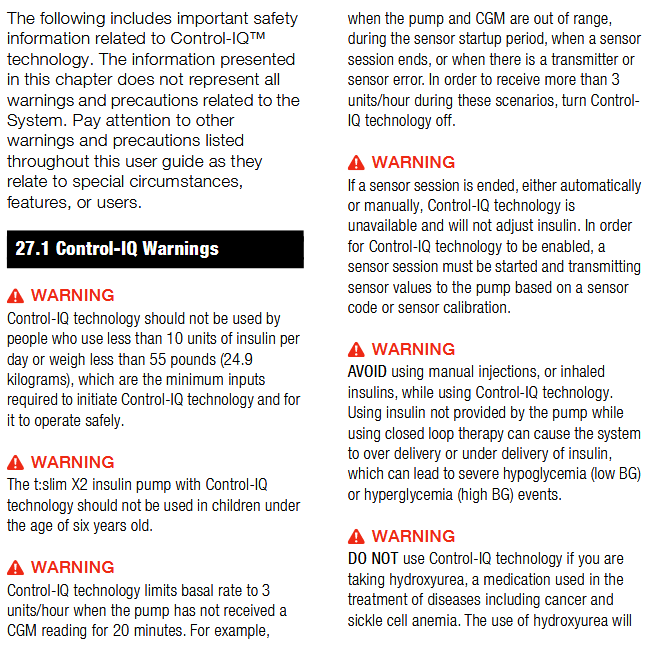I’m sorry, I don’t know of any particular resources for it off-hand, but Google behaves really well if you use quotes in your searches, like “Tandem” “u-200”. I know how it works, though.
For the time being, concentrated insulins only come in the pens. I don’t think Novolog has a U-200 option, but the newest insulin on the market, Lyumjev, does. Lyumjev has a much faster onset than Humalog or Novolog, shorter duration, and seems to be stable in the T:slim and not cause the problems Apridra and FIASP do. Unfortunately, some insurance make this difficult. You need a cooperative doctor to write your script for subcutaneous corrections, or something similar, because it’s not approved for pumps yet.
You basically just inject the insulin into the cartridge via the pen needle and skip the “suck the air bubble out” step. The pens deliver in the same “units” as everything u-100, they just do it by delivering half the volume. Which means you actually need to inject 600 units worth of “units” into the cartridge, to equal the 3ml maximum, or 445 units would be closer to 3 days worth. 130 units x 3 days + 55 units wasted to cartridge/tubing (would usually be ~15 units in the cartridge and ~12 units to fill 23 inch tubing, but you’ve got to double the waste too) = 445 units. I don’t know what the max dosage is on those pens, you might have to inject in smaller increments until you get the total volume in.
Afterr you fill the cartridge, you want to flick it a bunch, just like a syringe, to knock any air bubbles up to the pigtail (luer lock connection). Then when you fill the tubing, the air bubble gets pushed out before the insulin does, and you still wind up with an air-free cartridge. (This was actually normal fill process for the original T:slim, but people complained about how long it takes to fill the tubing, so they have you extract the bubble manually first now. Sucky trade-off, if you ask me).
As for settings, everything gets adjusted so delivering half as much insulin. Correction Factor and I:carb gets doubled. Basal rates get cut in half. The trickiest part is the lazy boluses. You can’t just look at food and “guesstimate” units without stopping to consider that you only need half of what you did before.
As soon as Tandem gets approval for Type 2s, though, all this will get so much easier. Concentrated insulins will get approved for pump use and have more insurance coverage. Novolog would probably join the game. I assume there will be a toggle option somewhere in the settings that will allow you to indicate what concentration insulin you’ll be using, and you won’t have to lie about all your settings anymore.
According to that talk I listened to, concentrated insulins are the way of the future anyway, because there’s so much emphasis on discreet pumping and shrinking the size of these things. Discretion is a MASSIVE factor in marketing to those Type 2s, because the general population incorrectly blames people for this condition, so Type 2s have more of a tendency to feel shameful about needing insulin. We might all be using concentrated insulins in the near future, though, except those with incredibly low needs.


